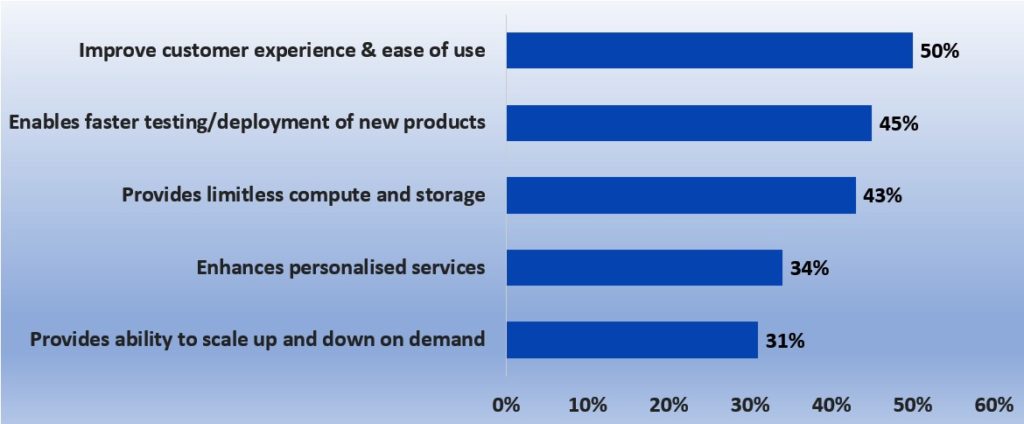McKinsey says serverless will be the next-generation cloud, providing not just cloud but full application functionality. How is this different from what we know as a cloud? Whereas in the traditional cloud, an application is hosted on a virtual server, with serverless, you run the complete functional application programming interface (API). Serverless allows businesses to focus solely on developing value-added functions and features.
Among the 120 local IT leaders in Singapore that participated in a Rackspace study, 60% do not envision owning a data centre in five years. A resounding 75% of IT decision-makers said that a scarcity of talent is inhibiting the adoption of new cloud development methods.
The survey also finds local organisations’ top cloud priorities evolving, from “basics” such as agility (24%) and scalability (36%) and toward more sophisticated issues such as security (37%) and compliance (33%).
Moreover, IT professionals' increased appetite for risk can be seen in their enthusiasm for exploring edge technologies (41%) and containers (54%), while over half plan to invest in hyperscale providers.

“The cloud is no longer a shiny new object– it is a nearly universally accepted technology, and there is almost no organisation that is not currently in the process of transforming itself via the cloud,” said Jeff DeVerter, chief technology evangelist, Rackspace Technology.
He also noted that at the same time, several barriers stand in the way of that transformation, most notably a dearth of IT talent.
"More than ever, organisations will need to rely on external expertise to achieve their cloud goals, as they continue to shed legacy infrastructure and ask the cloud to do more," he continued.
The talent shortage
The survey underscores a growing talent dilemma for local IT leaders, with more than half (52%) of all respondents citing talent shortages as a major business challenge, well ahead of concerns such as product shortages (36%) and wage growth (28%).
Companies are employing a variety of tactics to attract new IT talent, including promoting opportunities for training and development (43%), offering hybrid/flexible/work-from-home schedules (37%), and increasing starting salaries (31%). Twenty-three per cent are being even more aggressive, luring talent with large starting salaries or increases, while 16% are offering sign-on retention agreements and 15% are offering signing bonuses.
The permanence of cloud
“We have seen an evolution in the cloud discussion, away from some of the table stakes topics such as agility and scalability, and toward more sophisticated uses of the cloud, such as containers and edge, that is shaping the future,” added DeVerter.
He added that in addition to the closure of data centres, companies are also more apt to take on more risk than they had been in the recent past.

“Through the adoption of cloud technology, organisations have benefited from improved customer experience, and they have recognised the value that cloud offers when it comes to innovation and staying ahead of the competition, said Sandeep Bhargava, managing director, Asia Pacific and Japan at Rackspace Technology.
He commented that to continue to effectively leverage the benefits of cloud technology, businesses can address the challenge of hiring and retaining the much-needed IT talent in the region by joining forces with external cloud solutions providers.
Propensity to use multi-cloud
According to the survey, most local respondents use multi-cloud, with majorities saying they are using either AWS, Azure and/or Google Cloud. In addition, 73% are already finding new uses for single-tenant and/or private cloud infrastructure, while 56% said they plan to run serverless applications.
28% say their applications currently run on serverless technology, including functions such as automating workflows, scaling IoT apps, enabling virtual assistants/chatbots, and running SaaS functions.
Cloud supports innovation

Respondents to the survey claim that by combining cloud computing with emerging technologies — including AI, machine learning, containers and serverless — they are able to build innovative applications for a competitive advantage.
Can't do it alone
Survey respondents cited security as the most important factor to consider when choosing a cloud environment (37%), ahead of scalability (36%), compliance (33%) and flexibility/agility. (24%). Security is also the leading reason companies use external partners. In addition, more than half of respondents (51%) cite security as their biggest barrier to using serverless.





